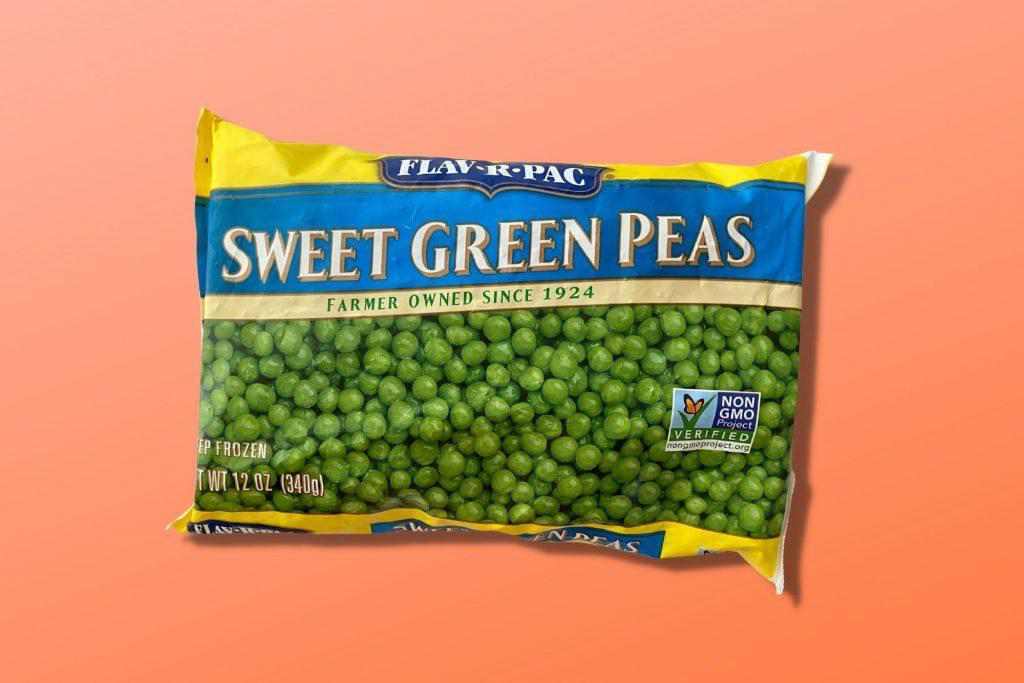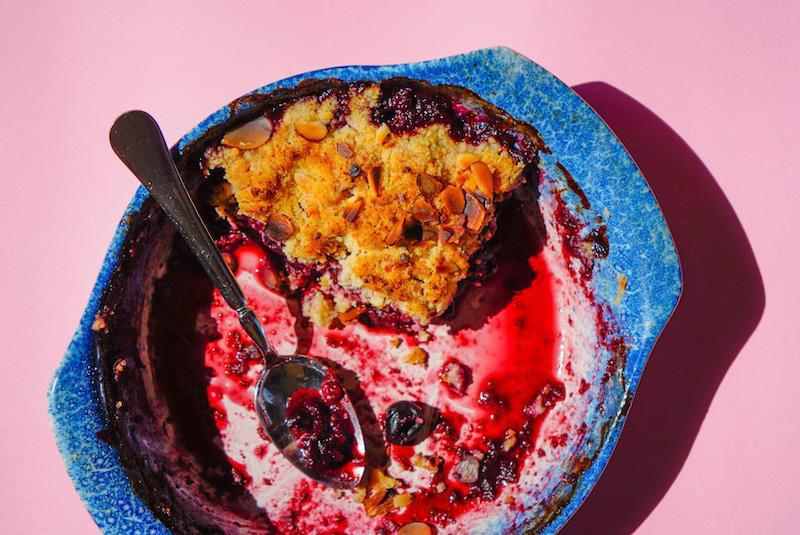Thanks to rising food costs, shoppers are once again warming up to frozen food.
Frozen food has been on my mind a lot over the last few weeks, which is … unusual.
It started with a comment from a member in a Facebook group that I help moderate. The group focuses on cooking fresh, in-season vegetables. But sometimes logistics get in the way. In this case, the member had to substitute frozen broccoli for fresh in a recipe and the results were disappointing.
Was the frozen broccoli to blame? No, she just needed some pointers to make that substitution with more confidence and better results next time.
Then I was perusing Cooking at Home, the new book by David Chang and Priya Krishna. “Your freezer is your pantry,” they both maintain. Chang, who’s one of the country’s most celebrated chefs, happily stocks his kitchen with everything from instant ramen noodles to frozen food, and lots of it. These days, he’s a busy working parent. Like generations of home cooks before him, his emphasis is on delicious and fast with minimum cleanup.
Chang and Krishna note that their moms reached for frozen veg all the time (price performer!). Mine did not. She was a reluctant cook who reached for a can opener more often than not, and our freezer seemed reserved for Häagen-Daz. Even now, my freezer is tiny, so what’s in there can’t hang around forever.

Fresh Food For All
“Why don’t more food magazines call for frozen veggies?” Chang asks. “Because orthodoxy tells us fresh is always best.”
He’s right. I know, because I’ve been in those editorial and test kitchen meetings. We routinely call for pre-cut fresh vegetables from the produce aisle for convenience with rare detours to the freezer case.
That probably comes down to the farm-to-table effect, something I heartily support to strengthen local and regional foodways.
I’m also currently reading John Birdsall’s excellent biography The Man Who Ate Too Much: The Life of James Beard. Though Beard collaborated with Birds Eye in the ‘40s, he only ever touted the convenience of frozen produce, never the quality. By the 1950s, he was desperately trying to buck the chilly tide of post-war America’s love affair with frozen everything. At one point, Beard spent a summer running a Nantucket burger stand, wowing patrons with the area’s bounty, from fresh lettuce to picked-that-day corn on the cob.
In the reverse of Chang’s question, Beard may have wondered, “Why don’t more food magazines celebrate fresh vegetables?”
Beard was ahead of his time, but other proponents of fresh, seasonal, local fare eventually followed. Perhaps most notable among them is Alice Waters. When Waters opened Chez Panisse in Berkeley, Calif., 50 years ago, her menu of glorious local farm-to-table dishes was considered revolutionary. Beard adored it, and a generation of talented chefs came out of Waters’ kitchen. (Jonathan Waxman, Frank Stitt, Suzanne Goin, David Lebovitz, Samin Nosrat, to name just a handful of the many. When it comes to incubating American culinary talent, Waters must hold some kind of record.)
By the early 2000s, farm-to-table eating was mainstream, and there we food editors were, chanting the “fresh-is-best” mantra.
Super-fresh, in-season fare is remarkable. When you can get it …
Super-fresh, in-season fare is remarkable when you can get it. And today’s supermarket produce section certainly offers an array of fruit and vegetables that shoppers in the 1950s (and ‘60s, ‘70s and ‘80s) could only dream of. Thanks to the farm-to-table movement, access to local and regional produce is better than ever, along with a truly amazing selection of “exotic” fruits from all over the world.
It’s just phenomenal. I can only imagine my mom, much less my grandma, walking through a supermarket produce section circa 2022: “What the hell is that? Wait … they cut things up for you???”
Meet the woman who brought kiwi to American supermarkets.
When Frozen Food Is Better
Still, access to fresh produce isn’t always the case everywhere, as anyone who lives outside of the Southern California fresh-food abundance bubble knows. Depending on the place and time of year, frozen can be (often is) the smarter option.
“I love those bags of pre-cut frozen vegetables,” Chang enthuses. “Frozen vegetables are far better than mediocre fresh vegetables.”
He’s right about that, too. Same goes for seafood, he adds, “because it’s frozen on the boat – meaning it’s a lot fresher than ‘fresh’ (which is often just thawed frozen fish and usually more expensive) that you see sitting out at your supermarket.”
Even Nigella Lawson, never one to shy away for a kitchen task, finds frozen fruit is a better option on occasion. Frozen cherries are the star of the smashing Cherry and Almond Crumble from her latest cookbook, Cook, Eat, Repeat. Though in true Lawson fashion, she tried it first with fresh, in-season fruit:
“I’d been hankering for a cherry crumble for some time,” she recalls, “and a couple of summers ago, extravagantly bought 2 pounds of cherries, and, with this great mound in front of me, set to with a cherry-pitter … only to find that the crumble was best made not with fresh cherries, but frozen.”

Frozen cherries trump fresh in Nigella Lawson’s spectacular crumble recipe.
Lawson doesn’t elaborate on exactly why frozen fruit works better in her recipe, but I suspect convenience plays a big role. The labor of pitting a pile of frozen cherries simply doesn’t pay off in a better dessert. And since the recipe calls for cooking the filling before assembling and baking the crumble (a step well worth the effort), I was very happy to simply dump a couple of bags of frozen fruit into a saucepan.
Use frozen berries in this Balsamic Cranberry-Fig Compote
Chang and Lawson aren’t the only foodie fans of the freezer section. Michael Pollan (author of The Ominvore’s Dilemma and other influential books) once called frozen spinach one of mankind’s greatest inventions and has long touted frozen fare as a convenient, affordable choice. (He’s is a longtime advocate for local fare, too, so it’s not like he’s choosing sides.)
Frozen vegetables are far better than mediocre fresh vegetables.
David Chang
It’s true. Nutritionally speaking, frozen fruits and veggies are a solid option. Produce is processed within hours of harvest to lock in nutrition. And “processing” simply means it’s blanched (if it’s vegetables) and flash frozen, so all that bag contains is the fruit or vegetable and maybe a smidgen of salt. A longer shelf life means you don’t have to rush to use things up before they die in the crisper drawer, which cuts down significantly on food waste. Plus, fruits and veggies are peeled and chopped – a nice timesaving bonus.
The pandemic certainly led many consumers to (re)discover the benefits of frozen fare, from fruits and vegetables to frozen pizza. Sales of frozen food jumped 21 percent in 2020 as people turned to longer-shelf-life options to cut down on trips to the supermarket. And it’s still going strong.
In addition convenience and less waste, price is a big factor. Frozen fruit and vegetables typically are cheaper than fresh. I did a price check at Ralphs. Here’s what I found:
- Whole head = cheapest option at 11 cents per ounce — until you factor in how much of that will be trimmed away and discarded, ideally composted (unless you’re really diligent about eating root-to-stem).
- A bag of prepped fresh cauliflower florets = 21 cents per ounce. The most expensive option, but maybe worth the convenience — if you’re planning to toss them in a stir-fry that night. Otherwise, that refrigerated cut-up veg is gonna get tired, fast.
- Frozen cauliflower florets = 14 cents per ounce. All of that’s useable, and it can wait until you’re ready for it (and what you don’t use now can go back in the freezer).
But Chang’s and Krishna’s moms could have told me that.
Guide: Salty Condiments, From Soy Sauce to Worcestershire
Even now, almost two years of supply chain and labor shortage issues are impacting the availability — and quality — of fresh produce at the supermarket. Those fresh fruits and veggies may not be as perky when they arrive at the store; they may spend more time on display than they used to. They may not be as “fresh” as you expect.
Frozen fare’s growth continues, especially among millennial shoppers, who have embraced the convenience, price and minimal food waste that come with it.
Produce Tips
Shopping at a local farmers’ market is the best option for the freshest produce, no question. But that’s not always available or convenient. Some tips for the supermarket:
- Buy bulk items. It’s easier to verify what you’re buying is in good shape, plus whole items will last longer than precut ones.
- Where possible, skip pre-bagged produce or items in clamshell packaging. Fruits and veggies that you can see from the outside may look OK, but items within may already be going bad (I’ve had this happen twice recently).
- Use fresh produce promptly. That lettuce may not last as long in the crisper drawer as it used to.
Subbing Frozen Food for Fresh
If fresh produce isn’t looking as great as you’d like, or you’re not sure how quickly you’ll use it, frozen options are a fine substitute. As with any swap, though, it helps to know what to expect when using frozen produce in place of fresh:
- Frozen vegetables are blanched (par-cooked), so their cooking time will be shorter than fresh produce. Use the directions on the bag as a guideline, and sample them as they cook. When they’re done to your liking, they’re good to go.
- You can steam, roast, sauté or stir-fry frozen veggies — and they can go straight from the freezer into the pan.
- Some items are ready to go as is. Certainly, you can toss frozen fruit straight into a smoothie. And when it comes to frozen spinach, often you can simply thaw, squeeze it dry and use it as is in everything from casseroles to dips.
Try this Creamy Spinach Artichoke Pasta
So I guess you could say I’m coming around to what Chang’s and Krishna’s moms knew all along: Frozen fruits and vegetables are your friends. Make nice with them.
